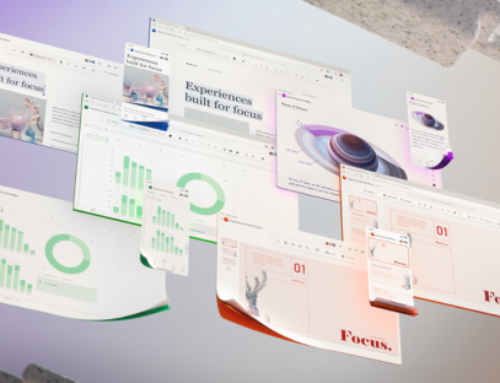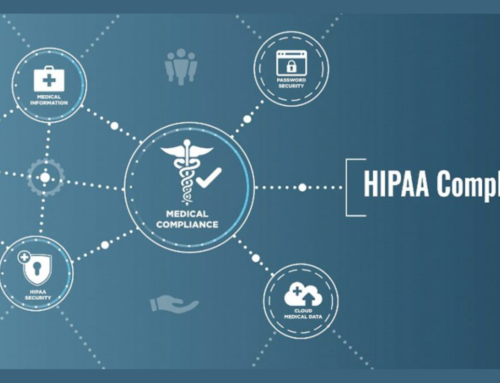Introduction to Desktop vs. Web vs. Mobile Apps
In the ever-evolving landscape of digital productivity, Microsoft 365 stands as a powerhouse, offering a suite of applications designed to meet the diverse needs of individuals and businesses. This comprehensive set of tools is accessible through various platforms, including desktop applications, web browsers, and mobile devices. Each avenue presents unique advantages and challenges, catering to different user preferences, work environments, and usage scenarios.
Desktop Applications: The Foundation of Microsoft 365
Desktop applications within Microsoft 365 serve as the cornerstone of the productivity suite, offering a range of essential tools for users worldwide. These applications are locally installed on a user’s computer, providing a reliable and feature-rich environment for various tasks. Here’s a closer look at some of the key desktop applications in Microsoft 365:
- Microsoft Word:
Word is a word processing application that enables users to create, edit, and format documents.
It includes a wide array of formatting options, styles, and templates to help users create professional-looking documents.
- Microsoft Excel:
Excel is a powerful spreadsheet application used for data analysis, calculation, and visualization.
It features advanced functions, formulas, and charting tools to help users manage and analyze numerical data effectively.
- Microsoft PowerPoint:
PowerPoint is a presentation software that allows users to create visually appealing slideshows.
It offers design templates, animation features, and slide transition effects to enhance the presentation’s visual impact.
- Microsoft Outlook:
Outlook is an email client and personal information manager that facilitates email communication, scheduling, and task management.
It integrates seamlessly with other Microsoft 365 applications for a unified productivity experience.
In addition to the core applications mentioned above, Microsoft 365 includes a suite of other desktop tools such as OneNote (for note-taking), Access (for database management), Publisher (for desktop publishing), and more.
These applications cater to various needs, providing users with a comprehensive set of tools for different tasks.
Key Features:
- Offline Access: Desktop applications in Microsoft 365 can be used offline, allowing users to work on documents, spreadsheets, or presentations even without an internet connection.
- Enhanced Functionality: The local installation of these applications ensures robust performance and access to advanced features that may not be available in web-based alternatives.
Integration with Cloud Services:
- While desktop applications offer offline capabilities, they are often integrated with Microsoft 365’s cloud services, enabling seamless collaboration and synchronization across devices.
- Users can save their work to the cloud, making it accessible from multiple devices and allowing for real-time collaboration with others.
Microsoft 365’s desktop applications provide a comprehensive suite of tools that empower users to create, collaborate, and manage their work efficiently, both online and offline. These applications continue to be fundamental in driving productivity and facilitating a seamless workflow for individuals and businesses alike.
Advantages of Desktop Applications:
- Performance and Speed:
Desktop applications leverage the computing power of the local machine, which often results in superior performance and faster execution of tasks.
They can efficiently handle resource-intensive operations, such as complex calculations, rendering high-quality graphics, or processing large amounts of data, without relying heavily on internet bandwidth.
- Advanced Features:
Desktop versions of applications often provide a more extensive set of features compared to their web or mobile counterparts. This is because desktop platforms can take full advantage of the capabilities of the local operating system and hardware.
For example, Microsoft 365 applications on the desktop may include advanced data analysis tools in Excel, sophisticated document formatting options in Word, and powerful multimedia capabilities in PowerPoint.
- Offline Access:
One of the standout advantages of desktop applications is their ability to function seamlessly without an internet connection. This is particularly crucial for users who need to work in environments with limited or no internet access.
Users can create, edit, and save documents locally on their machines, ensuring uninterrupted productivity. Changes made offline can be synchronized with cloud services when an internet connection is re-established.
- Resource Utilization:
Desktop applications have direct access to the resources of the local machine, allowing them to optimize resource utilization efficiently.
They can make use of the computer’s processing power, memory, and storage without the constraints imposed by browser limitations or mobile device restrictions, resulting in a smoother and more responsive user experience.
- Customization and Integration:
Desktop applications can be tailored to the specific operating system and hardware, providing a more integrated and seamless user experience.
They can take advantage of system-level integrations, such as notifications, file associations, and taskbar interactions, enhancing the overall usability and accessibility of the application.
- Security:
Desktop applications can often implement more robust security measures, as they have greater control over local system resources.
Data can be stored and encrypted locally, reducing the risk of unauthorized access. Additionally, security protocols can be tailored to the specific operating system, offering a higher level of protection against potential threats.
Desktop applications excel in performance, advanced features, offline access, efficient resource utilization, customization, and security, making them a preferred choice for tasks that demand high computing power and a rich set of functionalities.
Challenges of Desktop Applications:
- Limited Accessibility:
Desktop applications face a significant challenge in terms of limited accessibility. Unlike web-based or cloud applications that can be accessed from any device with an internet connection, desktop applications are tied to a specific device. Users must install the software on each device they intend to use, restricting their ability to seamlessly transition between different machines. This limitation can be particularly inconvenient in today’s dynamic work environments where flexibility and remote work are increasingly essential.
- Updates and Maintenance:
Another challenge associated with desktop applications is the manual handling of updates and maintenance. Unlike web applications that can be updated centrally on servers, desktop applications require users or IT departments to manually install updates on each individual device. For large enterprises with numerous installations, this process can be time-consuming and prone to errors. Keeping all instances of the software up-to-date becomes a logistical challenge, potentially leading to security vulnerabilities if updates are not promptly implemented. This aspect of desktop application management contrasts with the more streamlined update processes offered by web and cloud-based alternatives.
- Integration and Compatibility:
Desktop applications often face challenges related to integration and compatibility with other software and systems. As technology evolves, new operating systems and hardware configurations emerge, creating potential compatibility issues for desktop applications. Ensuring seamless integration with other tools and platforms may require additional development efforts and ongoing support. This challenge becomes more pronounced in diverse technology ecosystems where users may have different devices and operating systems, making it imperative for desktop applications to adapt to varying environments.
- Dependency on System Resources:
Desktop applications are often resource-intensive, relying heavily on the capabilities of the user’s device. This dependency can lead to performance issues on less powerful or outdated hardware, impacting the overall user experience. Additionally, as software evolves and demands more from system resources, users may find their devices struggling to keep up, necessitating frequent upgrades or replacements. This challenge contrasts with web applications that offload much of the processing burden to servers, providing a more consistent user experience across different devices.
- Security Concerns:
Security is a critical concern for desktop applications, especially when considering the decentralized nature of updates and the diverse range of devices they run on. Ensuring that all instances of the software are secure requires vigilant monitoring and patching of potential vulnerabilities. Unlike web applications that benefit from centralized security measures, desktop applications are more susceptible to individual user negligence or delayed updates, exposing them to a higher risk of security breaches. Implementing robust security measures becomes imperative for organizations relying on desktop applications to safeguard sensitive data and maintain the trust of their users.
Web Applications: Unleashing Productivity in the Browser
Web Applications:
Web applications are software programs or tools that users access and interact with through a web browser, without the need for installation on a local device.
- Accessibility: Users can access web applications from any device with an internet connection.
- Cross-platform Compatibility: Web apps can run on various operating systems without requiring specific adaptations for each.
- Real-time Collaboration: Multiple users can collaborate on the same document or project simultaneously.
Unleashing Productivity in the Browser:
- Productivity Enhancement: By moving applications to the web, users can enhance productivity through seamless collaboration, instant updates, and the ability to work from anywhere.
- Browser Integration: Web applications leverage the capabilities of modern browsers, providing a familiar and user-friendly interface.
Proliferation of Web Technologies:
- Evolution of Web Technologies: The constant advancement of web technologies, such as HTML5, CSS3, and JavaScript, has enabled the development of sophisticated web applications that rival the functionality of traditional desktop applications.
- Rich User Experiences: Modern web applications can offer rich user experiences, including interactive interfaces, multimedia content, and dynamic data updates.
Microsoft’s Web Versions of Applications:
- Office 365 and Microsoft 365: Microsoft has introduced web versions of its popular productivity applications, such as Word, Excel, PowerPoint, and others, as part of its Office 365 and later, Microsoft 365 suites.
- Cloud Integration: These web applications are integrated with cloud services, allowing users to store, access, and collaborate on documents in real-time through cloud storage solutions like OneDrive.
Departure from Traditional Desktop-Bound Workflows:
- Shift to the Cloud: The mention of a “departure from traditional desktop-bound workflows” signifies a shift towards cloud computing. Instead of relying on locally installed software, users now leverage the capabilities of cloud-based services for storage, processing, and collaboration.
- Flexibility and Mobility: Web applications enable users to break free from the constraints of working on a specific desktop or device, providing flexibility and mobility in their workflows.
The passage emphasizes the transformative impact of web technologies on productivity, with a specific focus on Microsoft’s adoption of web-based applications and the shift away from traditional desktop-centric workflows towards more flexible and collaborative cloud-based approaches.
Advantages of Web Applications:
Web applications offer several advantages, making them a preferred choice for various users and organizations. One notable advantage is cross-platform compatibility. Users can access Microsoft 365 tools from any device with a compatible browser, allowing for seamless transitions between different platforms. This flexibility is especially valuable in today’s dynamic work environments where individuals frequently switch between desktops, laptops, tablets, and smartphones.
Real-time collaboration stands out as another key benefit of web applications. With this feature, multiple users can work on the same document, spreadsheet, or presentation simultaneously. This fosters efficient teamwork, enabling instant feedback and reducing the need for extensive version control. The ability to collaborate in real-time is particularly advantageous for teams working remotely or across different geographical locations.
Automatic updates represent a significant advantage over traditional desktop applications. Web applications are updated automatically by the service provider, ensuring that users always have access to the latest features and security patches. This eliminates the need for users to manually update their applications, reducing the risk of security vulnerabilities and ensuring a consistent user experience across all devices.
Cross-platform compatibility, real-time collaboration, and automatic updates make web applications a compelling choice for individuals and businesses alike. These advantages contribute to enhanced productivity, efficient collaboration, and a more secure and up-to-date computing experience for users.
Challenges of Web Applications:
- Limited Offline Functionality:
Dependency on Internet Connectivity: Web applications heavily rely on an internet connection to function optimally. When users are offline, the functionality of web apps can be limited, and certain features may not be accessible. While technologies like Service Workers and Progressive Web Apps (PWAs) have improved offline capabilities, they may not provide the same seamless experience as desktop applications.
Data Synchronization Challenges: Offline functionality often involves syncing data between the local device and the server when the internet connection is restored. This process can be complex, and ensuring that the data remains consistent and up-to-date on both ends poses a challenge.
Reduced Performance: In offline mode, web applications may not perform as efficiently as when connected to the internet, especially for tasks that require real-time data updates or communication with remote servers.
- Browser Dependency:
Cross-Browser Compatibility: Web developers face challenges in ensuring consistent performance and user experience across different web browsers such as Chrome, Firefox, Safari, and Edge. Each browser may interpret and render code differently, leading to potential inconsistencies in how a web application appears and functions.
Version Compatibility: Browsers regularly release new versions with updates and changes. Ensuring that a web application remains compatible with various browser versions can be challenging, as developers need to adapt their code to account for differences in rendering engines and feature support.
Testing Overhead: Web developers must invest time and resources in thorough testing across multiple browsers to identify and address compatibility issues. This testing process can be time-consuming and may require additional effort to implement workarounds for specific browser quirks.
Performance Variability: The performance of web applications can vary across browsers, impacting factors such as page load times, responsiveness, and the smoothness of animations. This variability can affect the overall user experience and may require optimization efforts for each targeted browser.
Mobile Apps: Productivity on the Go
Mobile Apps as a Response to the Dominance of Mobile Devices:
The reference to an era dominated by mobile devices underscores the pervasive use of smartphones and tablets in our daily lives.
Microsoft recognizes this trend and has responded by creating a suite of applications specifically designed for these portable devices.
Microsoft’s Suite of Applications:
Microsoft offers a suite of applications that cater to various productivity needs.
These applications are likely to include popular tools such as Microsoft Word, Excel, PowerPoint, Outlook, and possibly others, each adapted for mobile usage.
Condensed Versions for Portability:
The mobile apps are described as offering a “condensed version” of the desktop and web experiences. This suggests that the applications have been streamlined and optimized for the smaller screens and touch interfaces of mobile devices.
The focus on condensation implies that the apps prioritize essential features and functionalities to ensure a seamless and efficient user experience on mobile platforms.
Prioritizing Portability and Quick Access:
The emphasis on portability underscores the idea that users can carry out their tasks and remain productive while on the move.
Quick access highlights the responsiveness of these mobile apps, allowing users to swiftly open and use them whenever needed, without the constraints of being tied to a desktop or laptop.
Enhanced Mobility and Flexibility:
By tailoring their applications for mobile use, Microsoft aims to provide users with the flexibility to work from different locations and situations.
This adaptability aligns with the modern work culture, where professionals may need to be productive outside traditional office settings.
Integration with Desktop and Web Experiences:
Although the mobile apps are described as condensed versions, there is likely to be integration with the broader Microsoft ecosystem. This means that users can seamlessly transition between their desktop, web, and mobile experiences, ensuring continuity and consistency in their work.
Advantages of Mobile Apps:
- Portability:
One of the primary advantages of mobile apps lies in their inherent portability. Unlike traditional office setups, mobile apps enable users to work from virtually anywhere. Whether in transit, at a coffee shop, or during a business trip, users can access their applications and data, promoting a flexible and dynamic work environment. This portability not only enhances productivity but also supports a modern work culture that values mobility and adaptability.
- Touch-Friendly Interface:
Mobile apps are meticulously designed to cater to touch interfaces, a crucial aspect given the prevalence of smartphones and tablets. The touch-friendly interface enhances user experience by accommodating the limitations of smaller screens. The intuitive design allows users to navigate through the app effortlessly, facilitating a seamless interaction. This adaptability to touch gestures makes mobile apps more accessible and user-friendly compared to applications designed solely for desktop environments.
- Integration with Device Features:
Another significant advantage of mobile apps is their integration with various device features. Modern smartphones come equipped with powerful capabilities, such as cameras and voice recognition, and mobile apps leverage these features to enhance functionality. For instance, document editing apps can seamlessly integrate with the device’s camera, enabling users to capture and insert images directly into their documents. Voice recognition integration allows users to dictate text, offering a hands-free alternative for data input. This level of integration not only streamlines processes but also capitalizes on the rich features of contemporary mobile devices.
Challenges of Mobile Apps:
- Reduced Feature Set:
Mobile apps, despite their undeniable convenience, often grapple with a reduced feature set when compared to their desktop or web counterparts. The challenge lies in striking a balance between portability and functionality. Developers are tasked with distilling the essential features to fit the constraints of mobile platforms. While this streamlining enhances the user experience on the go, it sometimes means sacrificing certain advanced functionalities available in larger, more robust versions. Consequently, users might find themselves missing out on intricate features that could be vital for specific tasks or workflows.
- Screen Size Limitations:
One of the notable challenges inherent in mobile app usage stems from the inherent limitations posed by smaller screens on mobile devices. While these screens are ideal for quick, on-the-go interactions, they can become a hindrance when dealing with complex documents or data-intensive tasks. The restricted screen real estate makes it challenging to provide users with a comprehensive view, particularly when working with detailed content such as spreadsheets or intricate documents. Users may experience difficulties in navigating through and comprehending intricate information due to the inherent constraints of limited screen space. This issue highlights the delicate balance developers must strike between functionality and the constraints imposed by mobile hardware.
Conclusion
Microsoft 365’s triumvirate of desktop, web, and mobile applications presents users with a versatile and comprehensive suite of tools. The choice of platform depends on the specific requirements of the user, the nature of the task, and the preferred working environment. The seamless integration across these platforms ensures a consistent and productive experience, allowing users to transition effortlessly between devices.
Microsoft 365 Desktop Apps generally offer the most features and capabilities since they provide a comprehensive offline experience. They are suitable for complex tasks and advanced functionalities.
Microsoft 365 Web Apps can be accessed from any device with an internet connection and a web browser, offering greater accessibility. Desktop Apps, on the other hand, are limited to the device on which they are installed.
Microsoft 365 Mobile Apps provide on-the-go access to essential productivity tools, making it convenient for users who need to work from smartphones or tablets. They are optimized for touch interfaces and smaller screens.
Yes, Microsoft 365 Web Apps require an internet connection since they are accessed through a web browser. However, some functionality may be available offline to a limited extent.
Collaboration is a strong suit of Microsoft 365 Web Apps, as they facilitate real-time collaboration through cloud-based services. Desktop Apps also support collaboration but may require manual syncing. Mobile Apps enable collaboration on the go, with features tailored for mobile devices.









